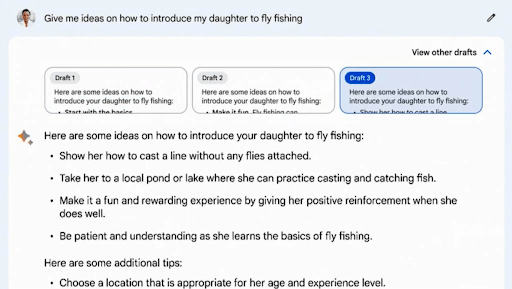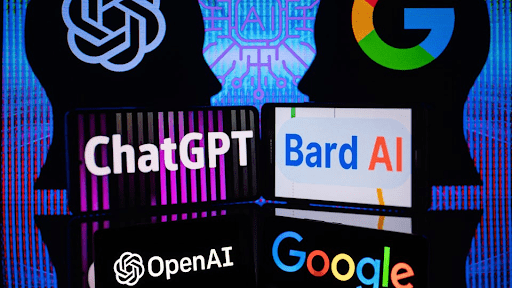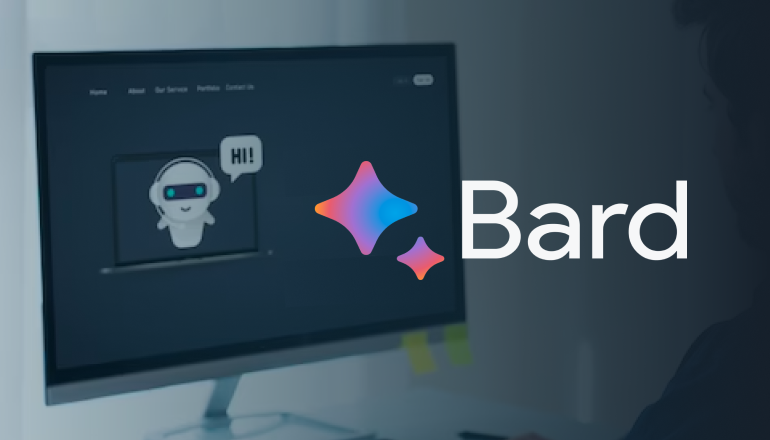The world of natural language chatbots is evolving rapidly, and the latest contender to join the fray is Google’s Bard AI. With the rising popularity of chatbots like ChatGPT, it was only a matter of time before Google stepped up its game. Designed to work seamlessly with the search engine giant’s flagship product, Bard is based on the LaMDA language model, much like ChatGPT’s powerful GPT-3.5.
But what sets Bard apart from other chatbot alternatives on the market today? What unique features and capabilities does it bring to the table? If you’re curious about this cutting-edge AI technology, read on for everything you need to know about Google’s latest innovation.
Understanding Google Bard
Bard is a generative and conversational AI chatbot that can help you with creative tasks, distill complex information from various internet sources, and even find recipes tailored to the ingredients you have in your fridge.
Google has made it clear that Bard can do much more than the standard Google search, stating that it can explain discoveries from NASA’s James Webb Space Telescope to a 9-year-old or even help you improve your football skills with tailored drills.

Image source: NYTimes
But Bard’s capabilities don’t end there. It can also tackle open-ended questions that even humans might struggle with, such as whether to wear a summer dress, dress up formally, etc. Bard can condense information from dozens of web pages into just a handful of paragraphs, and these responses may even appear at the top of search result pages.
How does Google Bard work?
While interactive chatbots like ChatGPT and Bard AI use large language models, they differ in their specific models. Bard uses Google’s LaMDA (Language Models for Dialogue Applications) instead of GPT-3.5 and GPT-4.
But here’s the catch: the quality of responses from these language models can be hit or miss, depending on their training data. If the model was trained on biased or outdated information, it could generate inaccurate or even false responses. This is a concern for Bard, which has taken longer to hit the market due to potential misinformation risks.
In fact, Google has already faced criticism for an official demo video that showed Bard making a factual error. As a result, the company has added disclaimers to the chatbot’s rollout. While Bard has the potential to generate authoritative-sounding answers, it’s important to approach its responses with caution and critical thinking.
What is LaMDA?
LaMDA is a machine-learning model created by Google to simulate human-like conversations. It’s like having a chatbot that can respond intelligently to any topic you throw at it. Google’s expert team used an advanced neural network called Transformer to build LaMDA, which is similar to the one used by Open AI’s GPT models.

Image Source: blog. Google
To make LaMDA the best chatbot possible, Google trained it on a massive dataset of 1.56 trillion words. They pulled this data from various public sources to ensure that LaMDA could handle a wide range of conversations.
Google’s LaMDA model has three critical objectives: quality, safety, and groundedness. In simpler terms, LaMDA’s responses must be logical, engaging, and appropriate for the conversation. It can’t just give generic answers like “okay” or “that’s nice.”
What’s really impressive is that LaMDA can search the internet for information in real time. This means it can fact-check responses and provide more accurate information when necessary. Overall, LaMDA is a remarkable achievement in the field of natural language processing, and it has the potential to revolutionize how we interact with machines in the future.
When Can I Use Google Bard AI?
Although Google has finally unveiled its highly awaited chatbot, Bard, after weeks of anticipation, only a few trusted members have received an early invitation. Thus, the rest of the world will have to join the waitlist and cross their fingers. For now, Bard is only accessible in the US and UK, and there’s no clear indication of when it will be available in other regions or languages.
Moreover, given the massive demand for conversational chatbots that causes the servers to reach capacity in a short time, it’s understandable that Google is being cautious in its rollout. Even Microsoft took a similar approach with Bing Chat, limiting access to a select group of users during its initial release.
And it’s not just the number of users or load to be handled at a given point; machine learning-based chatbots like Bard require significant computational resources. Thus, each response could cost Google up to ten times more than a typical search. By controlling the availability and usage of Bard, the company can mitigate these costs and scale over time. So, while the waitlist may be frustrating, it’s ultimately a necessary step in ensuring the long-term viability of this exciting new technology.
Which is better: Bard AI or ChatGPT?

Image Source: Forbes
ChatGPT’s versatility is unmatched, as it can perform a vast array of functions, such as crafting compelling articles, generating captivating news stories, or even writing fiction. It is equally adept at producing informative marketing content, financial reports, and other vital business documents. ChatGPT’s capabilities extend beyond language, as it can even assist with competitive exam preparation and comprehending coding languages.
On the other hand, Bard AI and Bing chatbots are essentially upgraded versions of their respective search engines. Bard AI revolutionizes traditional query searching by understanding the user’s intent behind the search, providing organized and contextualized search results.
One notable difference between ChatGPT and Bard AI is their information accessibility and database. Bard can access the internet to obtain pertinent information meaning real-time data, while ChatGPT’s knowledge of current events after 2021 is limited, according to its website, and may result in inaccurate instructions or misleading content.
Google Bard AI Limitations
Chatbots and conversational AI have transformed the sphere of computing in ways we never thought possible. They have opened up a whole new world of possibilities by allowing us to interact with computers in a natural, human-like way. These technologies are poised to revolutionize the way we use and operate search engines, digital assistants, and email programs.
However, like any new technology, chatbots and conversational AI have their fair share of flaws. Here are some limitations to Google’s Bard:
Can Sometimes Present Inaccurate Data
Despite being trained to generate contextually relevant responses, Google’s chatbot, Bard, may not always provide accurate information. This is because its underlying mechanism is focused on predicting the next word or sequence of words, making it challenging to distinguish between accurate and misleading information. As a result, Bard can sometimes present misleading or inaccurate information confidently and convincingly.
Responses Can Be Biased
Gaps, biases, and stereotypes in its training data are some of the factors for this limitation. Google is researching ways to prevent offensive responses and ensure that Bard’s responses reflect a wide range of viewpoints. For subjective topics like politics, Bard is designed to provide users with multiple perspectives since it cannot verify the prompt from primary source facts or well-established expert consensus.
Potential To Develop A ‘Personality’
Google admitted that Google Bard might give the impression of having opinions or emotions because it has been trained using human language. To prevent this, Google has established guidelines for how Bard should present itself and is constantly refining the model to provide unbiased and neutral responses.
Final Thoughts
After years of development, Google has unveiled Bard, which is ready to chat with you in a way that feels natural and effortless. With access to the vast resources of the internet, Google Bard can provide you with helpful and straightforward responses. From planning your next vacation to finding the best restaurant for your next night out, this versatile chatbot is here to assist you every step of the way.
However, if you’re in the mood for a longer conversation or need to write a lengthy email, ChatGPT’s higher character limit might be more your speed. While acknowledging the merits of other chatbots, it’s worth mentioning that Bing Chat is an equal contender. With a “Creative” mode under its wing, Bing Chat is able to generate longer and more detailed responses that users expected.
Frequently Asked Questions
.
What exactly is LaMDA?
Google developed the AI language model LaMDA (Language Models for Dialogue Applications), which can converse with users in a conversational manner that is natural and fluid.
Is Google Bard completely free?
Yes! Google Bard can be accessed using a free account, much like ChatGPT
What sectors will generative AI completely transform?
- Biochemistry and drug design
- Applied material science
- Product development lifecycle and so on
How is Google’s Bard AI helpful?
Google’s Bard is more than just a chatbot. It’s a cutting-edge interface to a Language Model for Dialogue Applications, which allows users to work collaboratively with generative AI. As a user’s creative and valuable peer, Bard fosters productivity, creativity, and curiosity.
Where to sign up for the Bard waitlist?
Visit bard.google.com on your phone, tablet, or computer to get on the Bard waitlist while logged into your Google account. Then select the Yes, I’m in option to indicate that you’d like to join by tapping or clicking the blue Join waitlist button.
